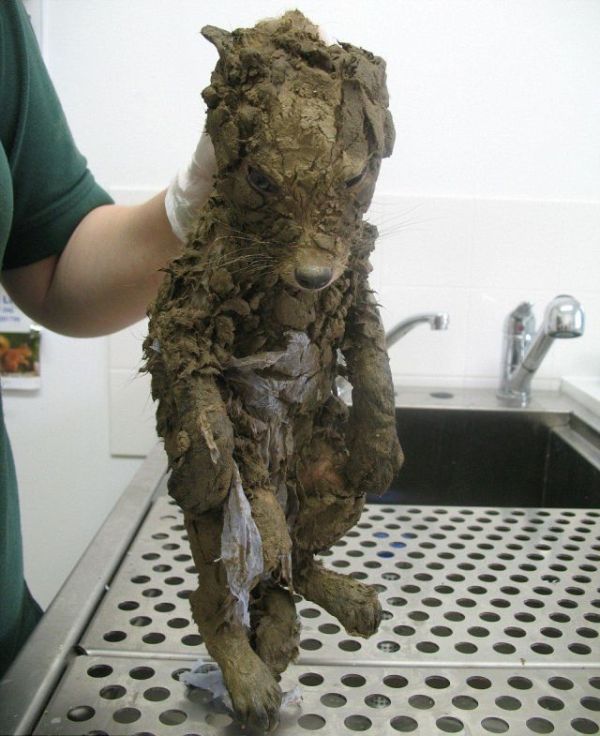|
|
Fox Rescued From Mud
|
The Modern English word "fox" is Old English, and comes from the Proto-Germanic word fukh – compare German Fuchs, Gothic fauho, Old Norse foa and Dutch vos. It corresponds to the Proto-Indo-European word puk- meaning "tail of it" (compare Sanskrit puccha, also "tail"). The bushy tail is also the source of the word for fox in Welsh: llwynog, from llwyn, "bush, grove". Lithuanian: uodegis, from uodega, "tail", Portuguese: raposa, from rabo, "tail" and Ojibwa: waagosh, from waa, which refers to the up and down "bounce" or flickering of an animal or its tail. Male foxes are known as dogs or reynards, females as vixens, and young as kits, pups, fuxs, or cubs. A group of foxes is a "skulk", "troop" or "earth".
General characteristics
In the wild, foxes can live for up to 10 years, but most foxes only live for 2 to 3 years due to hunting, road accidents and diseases. Foxes are generally smaller than other members of the family Canidae such as wolves, jackals, and domestic dogs. Reynards (male foxes) weigh on average, 5.9 kilograms (13 lb) and vixens (female foxes) weigh less, at around 5.2 kilograms (11.5 lb). Fox-like features typically include a distinctive muzzle (a "fox face") and bushy tail. Other physical characteristics vary according to habitat. For example, the fennec fox (and other species of fox adapted to life in the desert, such as the kit fox) has large ears and short fur, whereas the Arctic fox has tiny ears and thick, insulating fur. Another example is the red fox which has a typical auburn pelt, the tail normally ending with white marking. Litter sizes can vary greatly according to species and environment — the Arctic Fox, for example, has an average litter of four to five, with eleven as maximum.
|
|









